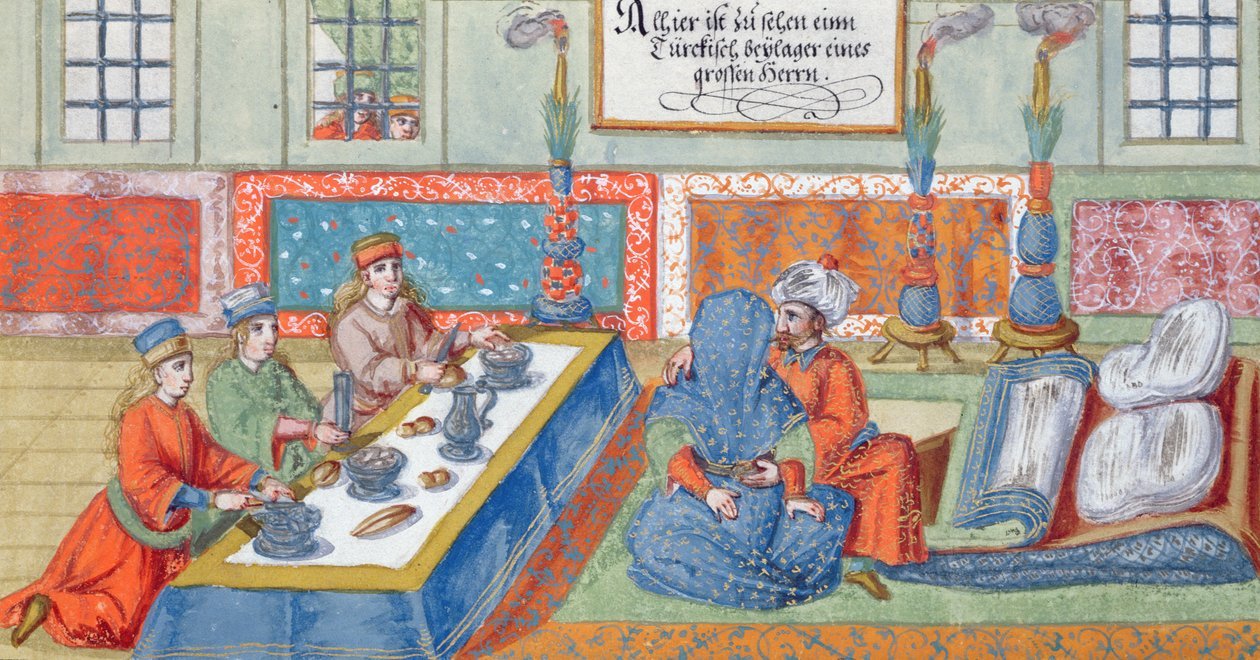Image: German School, Marriage Scene (from a manuscript on the Ottoman Empire), Watercolour on Paper, c.1600
In the Ottoman Empire, the institution of marriage was established according to the basic legal waqf of the Hanafi jurisprudence. According to this, in order for a man to marry a woman, a contract must first be made.
Islamic Law states that a religious marriage must be held before two witnesses, it is sufficient for them to state that they have married in the presence of two witnesses. However, since marriage has a traditionally important place in social life, the marriage contract must be made public.
In addition, some conditions must be met before a man and a woman can marry. For example, according to religion, a Muslim woman cannot marry a non-Muslim man. While a Muslim man was permitted to marry a woman who was either Jewish or Christian. However, the man was strictly prohibited from marrying anyone who was not Muslim, Jewish or Christian.
According to the Hanafi sect, men and women who were mature and reached puberty, were not eligible to be married by their parents without their consent.
© Costas and Rita Severis Foundation






